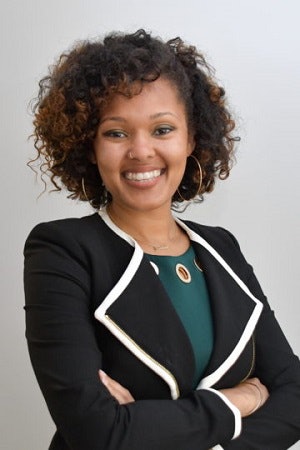Statewide free college programs are growing in popularity. The United States now has 23 programs – an increase of 8 programs compared to three years ago – that cover tuition and fees at either two or four-year institutions.
While college affordability advocates celebrate the trend, a recent study released by The Education Trust, a nonprofit for higher education reform, concludes that just because these programs offer free tuition, that does not mean they are equitably designed.
 Dr. Tiffany Jones
Dr. Tiffany JonesThe increase in free college programs “shows that state leaders are taking affordability seriously,” said co-author Jaime Ramirez-Mendoza, a higher education policy analyst at The Education Trust. “Unfortunately though, states still have a long way to go when it comes to creating equitable free college programs. A lot of programs do not benefit those with the highest needs [or] cover expenses beyond tuition and exclude a lot of today’s college students.”
Following up on a similar study in 2018, the report shows that few of the state programs measure up to the organization’s definition of an equitable free college program.
In fact, most programs don’t contribute to living expenses, which are a barrier for low-income students. Only a third of programs cover tuition for four years, including bachelor’s degrees. Though two years of free community college is an affordable option for low-income students, the report points out that Black and Latino students are underrepresented among bachelor’s degree earners and will continue to be if price deters them.
Many free college programs are also inaccessible to students who need them most. According to the report, 14 of the 23 programs that exist exclude non-traditional students, like older adults and returning students, who did not enroll in college immediately after high school. Nearly 36 million people in America spent some time in college but never got their degrees, according to the National Student Clearinghouse Research Center data.
For policymakers, “there’s still this myth of today’s college student being someone who is coming right out of high school, going to a four-year college full-time, not working, reading on the lawn in between classes,” said Dr. Tiffany Jones, senior director of higher education policy at The Education Trust. “This kind of picture in their mind of what a college student is [is actually] disconnected from the realities of today’s college students where 40% are part-time, for example. One in five are parents themselves.”
Incarcerated students also get left behind by free college programs, the study found. While 12 of the programs don’t explicitly exclude them, even those programs have eligibility requirements that prevent them from participating. For example, some programs require proof of residency and it’s unclear whether their location during that time in custody counts. Other programs want incarcerated students to express their intent to stay in the state post-college, but transfers between facilities make that a difficult commitment for them to make. Lack of access to the internet and their own documents while in prison can also make it hard to qualify for the program.
It can be “nearly impossible” for these students to benefit from free college programs, and the stakes of neglecting incarcerated students are high, said co-author Satra Taylor, a higher education policy analyst at The Education Trust. The United States incarcerates 2.3 million people, disproportionately people of color, while higher education in prison reduces rates of recidivism by 28%.
“600,000 people every year leave prison and try to restart their lives,” Taylor added. “If these individuals don’t have access to free college programs while they’re incarcerated, once they’re released, we face the tension [that] these individuals may end up going back to prison because they can’t restart their lives and contribute to their upward mobility.”
The report also focuses on barriers for undocumented students, who – like incarcerated students – can only participate in about half of the free college programs that exist.
These students don’t have many other options for an affordable college education, Ramirez-Mendoza pointed out. Undocumented students, including recipients of the Deferred Action for Childhood Arrivals (DACA) program, can’t access federal financial aid, and only 12 states offer in-state tuition and state financial aid to them.
Statewide free college programs “might be the only affordable pathway,” he said.
Jones doesn’t think these students have just been overlooked. For policymakers, “one way to keep the costs down is to reduce who is eligible in ways that may not be so obvious to the general public,” she said. It’s cheaper, and it circumvents possible tensions with constituents over who deserves higher education as a public good, she added.
As the COVID-19 pandemic continues, authors recognize that cash-strapped states might not be able to afford all of their equity goals for free college programs right now. Though it’s an investment, they can at least make incremental improvements. Authors argue it will ultimately be in their best interest as the health crisis and economic downturn continue to highlight inequities.
“Given a college education is more expensive and important than ever, equitable free college programs could be an equitable first step in forging a new future in which students – especially students from low-income backgrounds, students of color and non-traditional students – are no longer forced to shoulder this crushing debt to pursue their college dreams,” said Ramirez-Mendoza. “And then the country gets the highly-educated workforce that they need to have a recovering and thriving economy.”
Sara Weissman can be reached at [email protected].


















